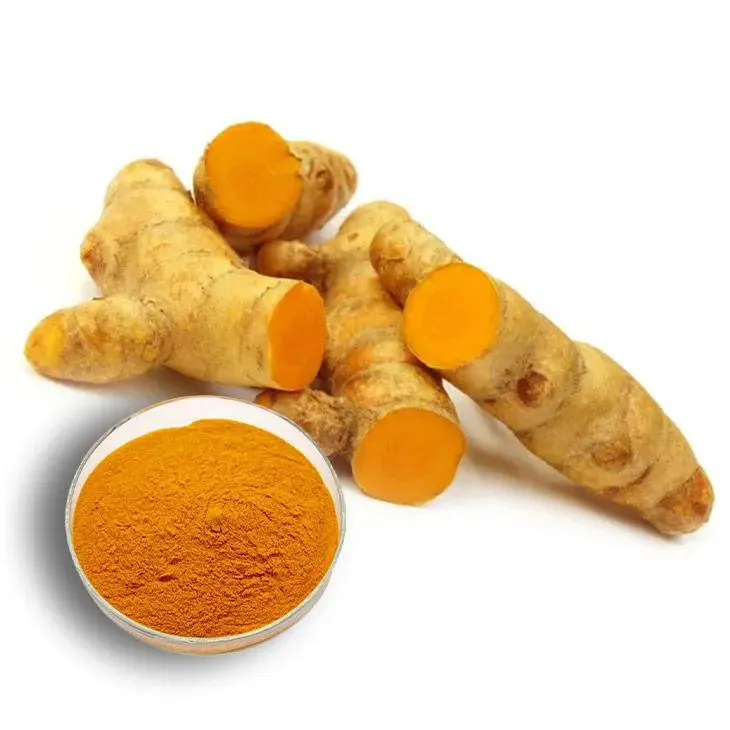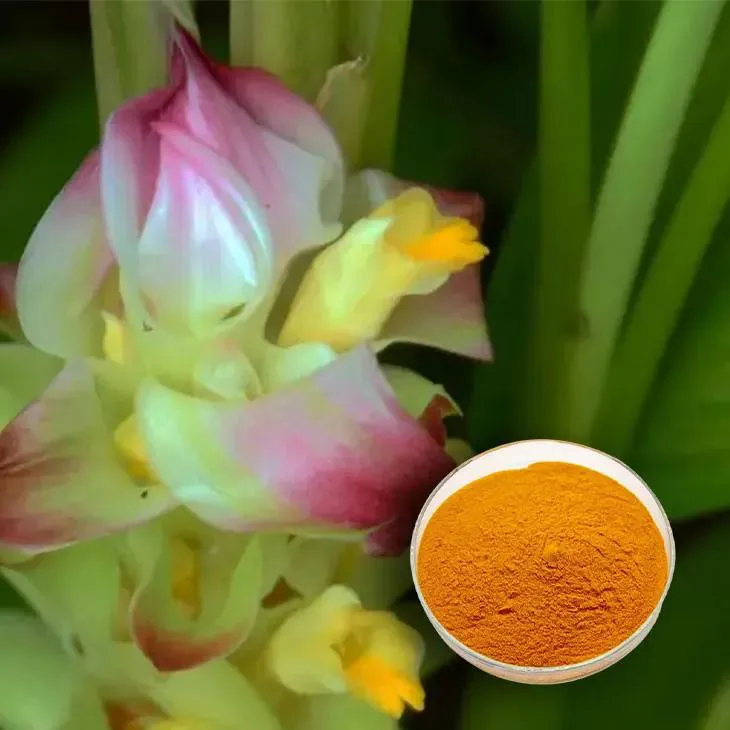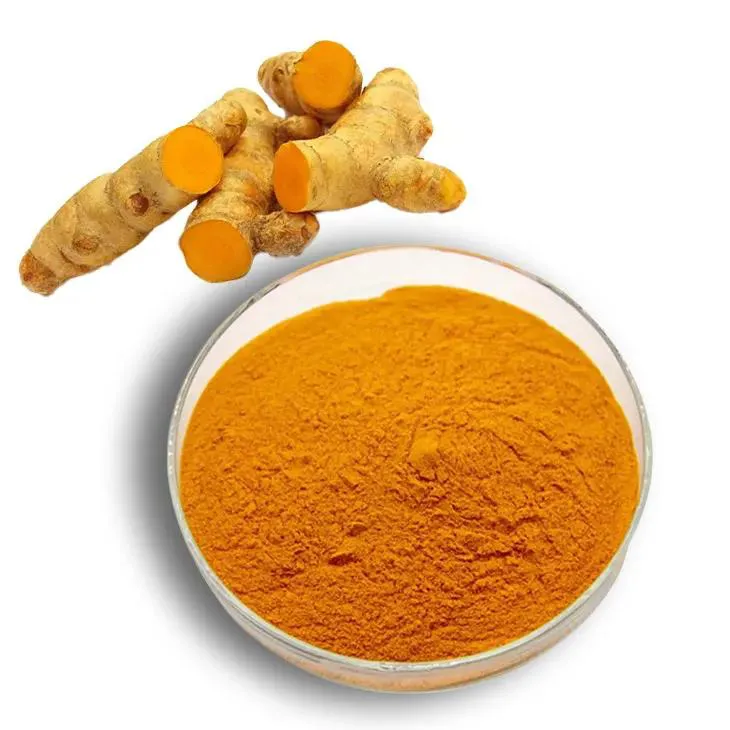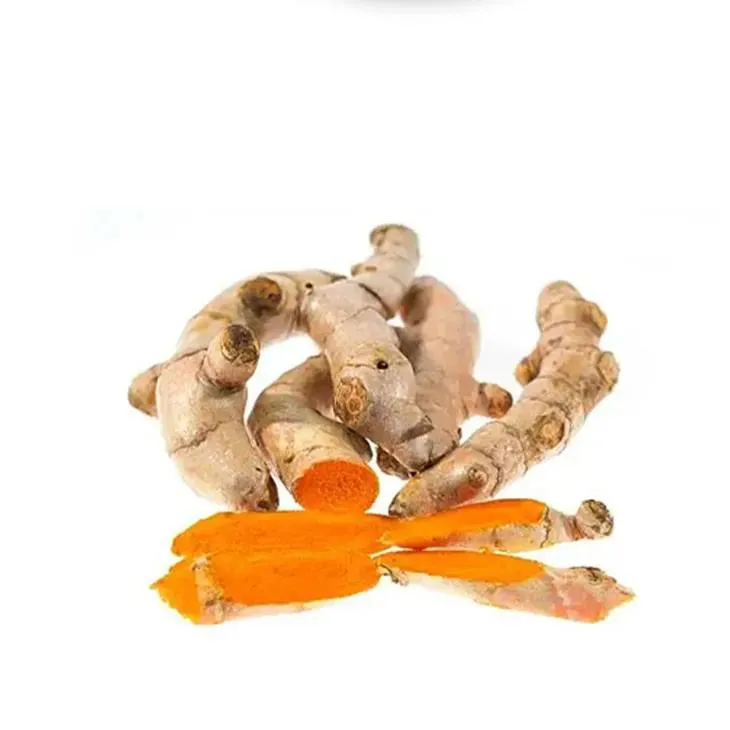- 0086-571-85302990
- sales@greenskybio.com
Curcumin extraction technology and production process.
2024-11-26

1. Introduction
Curcumin, a natural compound mainly derived from turmeric (Curcuma longa), has been recognized for its diverse health - promoting properties. These properties include anti - inflammatory, antioxidant, anti - cancer, and neuroprotective effects, among others. As a result, Curcumin has attracted significant attention in the fields of medicine, food, and cosmetics. However, the extraction of Curcumin from turmeric and its subsequent production into a usable form present several challenges. This article aims to explore the extraction techniques and production processes of curcumin in detail.

2. Traditional Extraction Methods
2.1 Solvent Extraction
Solvent extraction is one of the most common traditional methods for Curcumin Extraction.
- The process typically involves the use of organic solvents such as ethanol, methanol, or acetone. Turmeric powder or rhizome is soaked in the solvent for a certain period. For example, in a typical ethanol - based extraction, the turmeric material is immersed in ethanol for several hours to days, depending on the extraction conditions.
- After soaking, the mixture is filtered to separate the solvent containing the dissolved curcumin from the solid residue. The filtrate then undergoes further processing to obtain pure curcumin.
- However, solvent extraction has some drawbacks. The use of organic solvents may pose environmental and safety concerns. Also, the extraction efficiency may not be very high, and it may require multiple extraction steps to achieve a satisfactory yield.
2.2 Soxhlet Extraction
Soxhlet extraction is another traditional extraction method.
- In this method, the turmeric sample is placed in a Soxhlet extractor. A solvent, usually an organic solvent like hexane or chloroform in some cases, is continuously circulated through the sample. The solvent vaporizes in the Soxhlet apparatus, condenses, and then drips back onto the sample, allowing for continuous extraction.
- This method can provide a relatively more thorough extraction compared to simple solvent extraction. However, it is also time - consuming and requires a significant amount of solvent. Moreover, the solvents used may also have potential environmental and safety issues.

3. Modern Extraction Methods
3.1 Supercritical Fluid Extraction (SFE)
Supercritical fluid extraction has emerged as a promising modern extraction technique for curcumin.
- Supercritical fluids, such as supercritical carbon dioxide (sc - CO₂), are used in this method. The critical point of carbon dioxide (temperature of approximately 31.1 °C and pressure of around 73.8 bar) is a key factor. At this point, carbon dioxide has properties between a gas and a liquid, which makes it an excellent solvent for extraction.
- Advantages of SFE include high selectivity, which means it can selectively extract curcumin while leaving behind other unwanted components. It also has a relatively fast extraction rate and is more environmentally friendly compared to traditional solvent extraction methods as carbon dioxide is non - toxic, non - flammable, and easily recyclable.
- However, the equipment for SFE is relatively expensive, which may limit its widespread use in small - scale production. Also, the extraction process needs to be carefully optimized in terms of pressure, temperature, and extraction time to achieve the best results.
3.2 Microwave - Assisted Extraction (MAE)
Microwave - assisted extraction utilizes microwave energy to enhance the extraction of curcumin.
- Microwaves can penetrate the turmeric sample and cause the polar molecules in the sample to vibrate rapidly. This internal heating effect can break the cell walls of the turmeric more effectively, releasing curcumin into the extraction solvent more efficiently.
- Compared to traditional extraction methods, MAE can significantly reduce the extraction time. For example, in some cases, the extraction time can be reduced from hours in traditional methods to just a few minutes using MAE.
- However, the extraction efficiency of MAE may be affected by factors such as microwave power, extraction solvent, and sample size. Also, there may be some challenges in ensuring uniform heating throughout the sample during the extraction process.
3.3 Ultrasound - Assisted Extraction (UAE)
Ultrasound - assisted extraction is another modern extraction method.
- Ultrasound waves are applied to the turmeric - solvent mixture. The high - frequency ultrasound waves create cavitation bubbles in the solvent. When these bubbles collapse, they generate intense local shock waves and micro - jets, which can disrupt the cell walls of the turmeric and enhance the mass transfer of curcumin from the solid phase to the liquid phase.
- UAE has the advantages of being a relatively simple and cost - effective method. It can also improve the extraction efficiency and reduce the extraction time compared to traditional methods. However, like other extraction methods, the extraction conditions such as ultrasound frequency, power, and extraction time need to be optimized to obtain the best extraction results.

4. Production Process Factors
4.1 Raw Material Selection
Raw material selection is a crucial step in the curcumin production process.
- The quality and curcumin content of turmeric vary depending on factors such as the variety of turmeric, the geographical location of cultivation, and the harvesting time. For example, some varieties of turmeric may have a higher curcumin content than others. Turmeric grown in certain regions with favorable soil and climate conditions may also yield better - quality raw materials for Curcumin Extraction.
- It is important to select turmeric with a high curcumin content and good quality to ensure a high - yield and high - quality curcumin product. Additionally, proper storage and handling of the raw turmeric are necessary to prevent degradation of curcumin content.
4.2 Purification Steps
Purification steps are essential to obtain pure curcumin from the crude extract.
- After the extraction process, the crude extract usually contains not only curcumin but also other components such as oils, resins, and pigments. One common purification method is column chromatography. In column chromatography, the crude extract is passed through a column filled with a stationary phase (such as silica gel). Different components in the extract have different affinities for the stationary phase and the mobile phase (usually a solvent), and thus they can be separated.
- Another purification method is crystallization. By adjusting the temperature, concentration, and solvent composition, curcumin can be made to crystallize out of the solution, leaving behind other impurities. However, crystallization may require careful control of the conditions to ensure high - purity curcumin crystals are obtained.
4.3 Quality Control
Quality control is necessary throughout the curcumin production process.
- One important aspect of quality control is the determination of curcumin content. High - performance liquid chromatography (HPLC) is a commonly used method for accurately measuring the curcumin content in the final product. By comparing the measured curcumin content with the standard requirements, the quality of the product can be assessed.
- Impurity detection is also crucial. Methods such as gas chromatography - mass spectrometry (GC - MS) can be used to detect and identify any potential impurities in the curcumin product. This helps to ensure that the product is safe for consumption or use in various applications.
- Furthermore, quality control also includes aspects such as microbiological testing to ensure that the product is free from harmful microorganisms, and stability testing to evaluate the shelf - life of the curcumin product under different storage conditions.

5. Conclusion
In conclusion, Curcumin Extraction and production involve a variety of techniques and processes. Traditional extraction methods such as solvent extraction and Soxhlet extraction have been widely used, but they have some limitations. Modern extraction methods like supercritical fluid extraction, microwave - assisted extraction, and ultrasound - assisted extraction offer potential advantages in terms of extraction efficiency, selectivity, and environmental friendliness. In the production process, factors such as raw material selection, purification steps, and quality control play important roles in ensuring the production of high - quality curcumin. With the increasing demand for curcumin in various fields, continuous research and development in extraction techniques and production processes are necessary to improve the yield and quality of curcumin products.
FAQ:
What are the traditional extraction methods of curcumin?
Traditional extraction methods of curcumin mainly include solvent extraction. In solvent extraction, organic solvents like ethanol or acetone are often used. The process typically involves grinding the turmeric (the main source of curcumin) into a powder, then soaking it in the solvent for a period to dissolve the curcumin. After that, the solvent is evaporated to obtain the curcumin extract. However, traditional solvent extraction may have some drawbacks, such as the potential presence of solvent residues and relatively low extraction efficiency in some cases.
What is supercritical fluid extraction in curcumin extraction and what are its advantages?
Supercritical fluid extraction in curcumin extraction uses a supercritical fluid, usually carbon dioxide. In the supercritical state, carbon dioxide has properties between a gas and a liquid. The advantages are significant. Firstly, it is a clean extraction method as carbon dioxide is non - toxic, non - flammable, and leaves no harmful residues. Secondly, it can achieve a relatively high extraction efficiency and selectivity, which means it can better target curcumin and separate it from other components in the turmeric. Also, the extraction process can be controlled more precisely by adjusting parameters such as temperature and pressure.
How important is raw material selection in the curcumin production process?
Raw material selection is extremely important in the curcumin production process. High - quality turmeric should be chosen. Factors to consider include the origin of the turmeric, as different regions may produce turmeric with different curcumin contents. The variety of turmeric also matters; some varieties are known to have higher curcumin concentrations. Additionally, the freshness and purity of the turmeric are crucial. Fresh turmeric is more likely to contain a higher amount of intact curcumin, and pure turmeric without excessive contamination from other substances will lead to a better - quality curcumin extract.
What are the key purification steps in curcumin production?
In curcumin production, key purification steps are essential to obtain high - quality curcumin. One common step is filtration, which can remove solid impurities such as plant debris from the initial extract. Another important step is chromatography, which can separate curcumin from other closely related compounds based on their different chemical properties. Crystallization is also often used, where the curcumin is made to form crystals under specific conditions, which helps in further purifying and concentrating the curcumin.
How is quality control carried out in curcumin production?
Quality control in curcumin production is carried out through multiple methods. Firstly, the purity of the curcumin is measured using techniques such as high - performance liquid chromatography (HPLC). This ensures that the curcumin content in the final product meets the required standards. Secondly, tests for contaminants such as heavy metals and pesticides are performed. Microbiological tests are also necessary to check for the presence of harmful microorganisms. Additionally, physical properties like color, solubility, and melting point can be examined to ensure the consistency and quality of the curcumin product.
Related literature
- Optimization of Curcumin Extraction from Turmeric (Curcuma longa L.)"
- "Advanced Techniques for Curcumin Production: A Review"
- "Quality Assurance in Curcumin Extraction and Manufacturing"
- ▶ Hesperidin
- ▶ citrus bioflavonoids
- ▶ plant extract
- ▶ lycopene
- ▶ Diosmin
- ▶ Grape seed extract
- ▶ Sea buckthorn Juice Powder
- ▶ Beetroot powder
- ▶ Hops Extract
- ▶ Artichoke Extract
- ▶ Reishi mushroom extract
- ▶ Astaxanthin
- ▶ Green Tea Extract
- ▶ Curcumin Extract
- ▶ Horse Chestnut Extract
- ▶ Other Problems
- ▶ Boswellia Serrata Extract
- ▶ Resveratrol Extract
- ▶ Marigold Extract
- ▶ Grape Leaf Extract
- ▶ blog3
- ▶ blog4
-
Chinese Withania somnifera Extract Factory.
2024-11-26
-
中国松树皮提取物粉粉末供应商
2024-11-26
-
High - quality Marigold Extract Products.
2024-11-26
-
100% Pure Natural Mango - Flavored Powder.
2024-11-26
-
Elderberry Extract
2024-11-26
-
Hericium erinaceus extract powder
2024-11-26
-
Sugarcane Extract
2024-11-26
-
Medicinal Marshmallow Extract
2024-11-26
-
Propolis Extract Powder
2024-11-26
-
Bilberry Extract
2024-11-26
-
Peppermint Oil
2024-11-26
-
Giant Knotweed Extract
2024-11-26
-
Cocoa Extract
2024-11-26
-
Cassia Seed Extract
2024-11-26





















